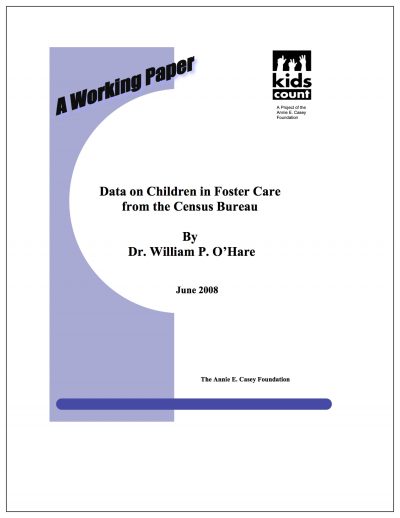Aging Out and Arrests
55% of 21-year-olds who had "aged out of foster care" had been arrested at least once between age 18 and 21, compared to only 8% if a similar-age group who did not age out of foster care.

This paper provides the first systematic examination of data collected by the U.S. Census Bureau on children in foster care. This data stands as an important source of information on a large segment of the foster child population and the households where they live.
The 2000 census was the first decennial census in the United States to identify children in foster care, and the American Community Survey (ACS) has collected data on foster children each year since 2000.
The document opens by examining the question used to identify foster children in the decennial census as well as the American Community Survey. It notes that Census Bureau surveys, when checked against administrative records, only identify about half of the number of children shown to be in foster care. The surveys do a better job of capturing children living in non-kinship family foster care while missing kids living in kinship care, institutional and group arrangements, the paper suggests.
The second part of report uses the 2006 ACS to provide data on the characteristics of non-kinship family foster care households compared to all households with children. The analysis first focuses on characteristics of household living arrangements, including family size and family structure, and the second part of the analysis examines socioeconomic characteristics of households with foster children. There is no other source of systematic data that provides such information for foster care providers or households where foster children live.
Households with foster children differ from other households with children on almost every dimension examined, according to the data.
In terms of living arrangements and when compared to all households with children, households with foster children are typically:
With respect to socioeconomic measures and when compared to all households with children, households with foster children are typically:
The families raising children in foster care are at a socioeconomic disadvantage on nearly every measure examined when compared to all households with kids, according to 2000 census data. Households with kids in foster care are also substantially larger, headcount-wise, relative to all households with kids.
We hope you'll find value in this report. We’d love to get a little information from you, which we'll use to notify you about relevant new resources.